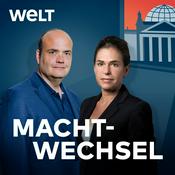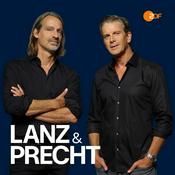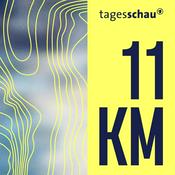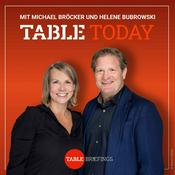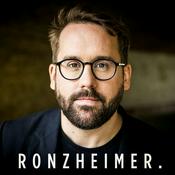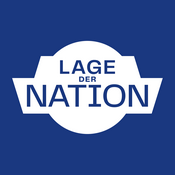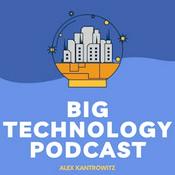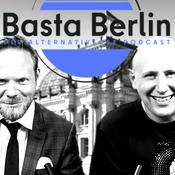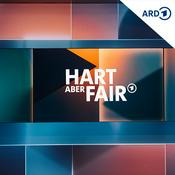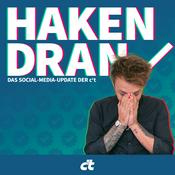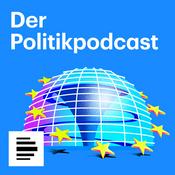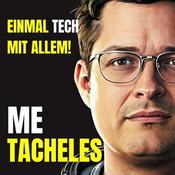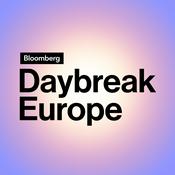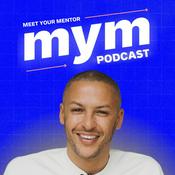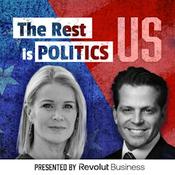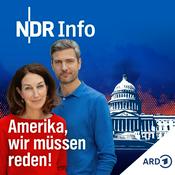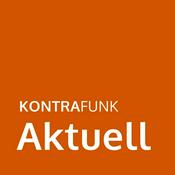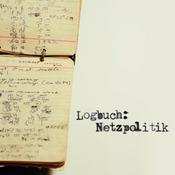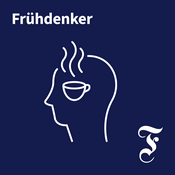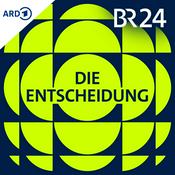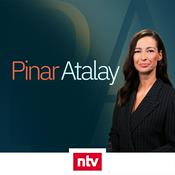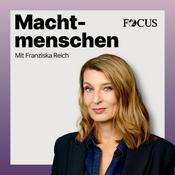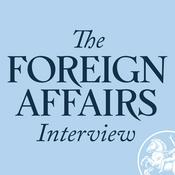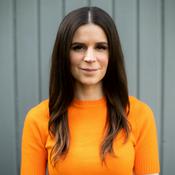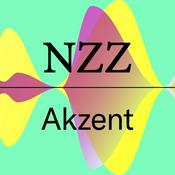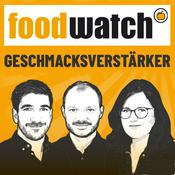221 Episoden

Quantum-Classical Hybrids: Supercharging AI with Qubits | Quantum Computing 101
22.12.2025 | 3 Min.
This is your Quantum Computing 101 podcast.Imagine this: just days ago, on December 18th, The Quantum Insider lit up with stories of Chinese researchers fine-tuning a billion-parameter AI model on a quantum computer—a global first, blending quantum power with classical smarts like never before. I'm Leo, your Learning Enhanced Operator, diving into the quantum realm on Quantum Computing 101. Buckle up; today's thrill is the hottest quantum-classical hybrid solution merging the best of both worlds.Picture me in the humming cryostat lab at QuantumBasel, where IonQ and their partners just shattered records with 99.99% two-qubit gate fidelity—the world's best in 2025. But the real magic? Their expanded partnership announced this week, optimizing large language models with hybrid quantum-classical techniques. Here's how it works: classical GPUs crunch the heavy data lifting, handling vast neural networks sequentially, like a diligent assembly line. Quantum processing units—QPUs—step in for the impossible parts, using qubits that superposition multiple states at once, entangled like dancers in a cosmic ballet, exploring exponential solution spaces in parallel.Take their approach: a hybrid solver feeds classical AI outputs into a quantum circuit on IonQ's trapped-ion system. Qubits, chilled to near absolute zero, vibrate with laser precision—feel that eerie blue glow, hear the faint pulse of microwaves calibrating gates. The quantum layer tackles optimization nightmares, like fine-tuning those billion parameters, where classical methods bog down in combinatorial explosions. Quantum variational algorithms, iterated with classical feedback loops, converge 10x faster, per their reports. It's NISQ-era genius: quantum for sampling vast probability landscapes, classical for error mitigation and scaling.This mirrors everyday chaos—like navigating holiday traffic in 2025's snarled cities. Classical GPS plots one path at a time; quantum hybrids entangle routes, superpositioning alternatives to dodge jams instantly. Or think Google's Willow chip from earlier this year, echoed in recent Zuchongzhi 3.0 claims—a million-fold speedup via hybrids simulating molecular dances for drug design, fusing superconducting qubits with supercomputers.We're not replacing classical beasts; we're supercharging them. Hybrid architectures, as Barcelona Supercomputing Center proves with their new QPU install, turn quantum from fragile lab toy to enterprise weapon—optimizing portfolios, simulating climates, accelerating fusion dreams.The arc bends toward fault-tolerant scale, but today's hybrids deliver value now. Quantum entanglement rewriting gravity rules? That's tomorrow's hook.Thanks for joining, listeners. Questions or topic ideas? Email [email protected]. Subscribe to Quantum Computing 101, and this has been a Quiet Please Production—for more, check quietplease.ai. Stay entangled!For more http://www.quietplease.aiGet the best deals https://amzn.to/3ODvOtaThis content was created in partnership and with the help of Artificial Intelligence AI

Quantum's Missing Link: New Chip Marries Classical and Quantum Computing
21.12.2025 | 3 Min.
This is your Quantum Computing 101 podcast.You’re listening to Quantum Computing 101. I’m Leo – Learning Enhanced Operator – and today I’m coming to you from a cleanroom that hums like a beehive made of lasers and liquid helium.Two days ago, researchers from New York University and the University of Queensland quietly dropped what might be the most important quantum news of the year: they demonstrated a semiconductor that lets classical and quantum circuitry live on the same chip, in fluent conversation, instead of shouting at each other through slow, noisy interfaces. According to their reports, they used a germanium-based superconductor, subtly doped with gallium, to form a new phase of matter that behaves as a kind of hardware-level interpreter between bits and qubits.This is today’s most interesting quantum–classical hybrid solution, because it doesn’t just bolt a quantum processor next to a classical CPU; it welds them together electrically and conceptually. Picture a chess grandmaster and a supercomputer sharing the same brain: the quantum side explores vast combinatorial forests in parallel, while the classical side prunes, scores, and decides – in nanoseconds, not milliseconds.In front of me, under a microscope, the chip looks utterly ordinary: metallic traces, pale rectangles, the faint scent of photoresist in the air. But on this thumbnail of silicon, the control electronics that shape microwave pulses, the AI accelerators that choose new parameters, and the quantum regions that host fragile superpositions all sit mere micrometers apart. No bulky rack of room‑temperature electronics. No forest of cables plunging into a dilution refrigerator. Just one tight, hybrid nervous system.Here’s how it combines the best of both approaches. Classical logic brings reliability, memory, and fast, deterministic control. Quantum regions contribute superposition, entanglement, and an exponential state space for things like molecular simulation or hard optimization. The classical side runs the outer loop of a variational algorithm, updating parameters, checking constraints, and interfacing with cloud services. The quantum side executes the inner loop: preparing states, applying gates, returning expectation values. With everything on one chip, feedback becomes almost instantaneous, which means faster convergence, better error mitigation, and far more practical workloads.You can feel the broader world vibrating at the same frequency. In national labs, superconducting giants chase fault-tolerant processors; in telecom, operators race to secure networks before large-scale quantum breaks today’s cryptography; in finance and climate science, teams test hybrid algorithms for portfolio optimization and atmospheric modeling. This new semiconductor bridge is the missing piece that lets those ambitions move from fragile lab stacks toward robust products.And that’s the story for today on Quantum Computing 101.Thank you for listening, and if you ever have any questions or have topics you want discussed on air, just send an email to [email protected]. Don’t forget to subscribe to Quantum Computing 101, and remember, this has been a Quiet Please Production. For more information, check out quiet please dot AI.For more http://www.quietplease.aiGet the best deals https://amzn.to/3ODvOtaThis content was created in partnership and with the help of Artificial Intelligence AI

Quantum Meets Classical: Hybrid MCMC Unleashes Combinatorial Optimization Breakthroughs (Character count: 90, including spaces)
19.12.2025 | 3 Min.
This is your Quantum Computing 101 podcast.Imagine this: just days ago, on December 17th, Silicon Quantum Computing dropped a bombshell in Nature—a silicon-based quantum processor that defies the usual curse of scaling. More qubits, better fidelity, up to 99.99%. I'm Leo, your Learning Enhanced Operator, and from the humming chill of my Osaka-inspired lab setup, this feels like quantum's tipping point. But today's real spark? That hybrid quantum-classical MCMC breakthrough from Yuichiro Nakano and Keisuke Fujii at the University of Osaka and RIKEN. It's the most intriguing mashup I've seen this week, blending quantum's wild superposition with classical rigor to conquer combinatorial optimization.Picture the scene: I'm suited up in a cryostat-lit chamber, the air crackling with cryogenic mist, superconducting qubits pulsing like synchronized heartbeats in a transverse-field frenzy. Pure quantum heuristics—like QAOA or quantum annealing—propose solutions in a blur of entangled states, exploring vast Hilbert spaces where classical bits plod linearly. But here's the drama: quantum dynamics bias the dance, favoring flashy ground states over the quiet crowd of degenerate optima in Ising models or k-SAT nightmares. Enter the hybrid hero: Markov Chain Monte Carlo, MCMC, where quantum acts as the bold proposer, flinging candidate solutions from superposition's probabilistic storm. Then, classical acceptance steps enforce detailed balance, like a stern referee rejecting unfair plays, restoring near-uniform sampling across all valid answers.We tested this on random 2-SAT near the satisfiability edge—QAOA-neural proposals fused with single spin-flips, matching PT-ICM's fairness. Push to 3-SAT, where classical falters, and it still delivers approximate uniformity, counting solutions with WalkSAT efficiency. It's quantum's intuition turbocharging classical precision: qubits handle the exponential search, classics tame the bias. Think of it as Einstein's spooky action partnering with Turing's machine—recent IonQ-QuantumBasel deals echo this, optimizing LLMs via hybrids for finance and drugs.This isn't hype; it's the bridge from NISQ noise to fault-tolerant glory. Like SQC's scaling silicon marvel, it proves hybrids unlock real value now, sidestepping full quantum supremacy till the 2030s. We're not replacing laptops; we're augmenting them for optimization odysseys in logistics, pharma, climate—everyday chaos mirrored in quantum flux.Thanks for tuning into Quantum Computing 101. Got questions or topic ideas? Email [email protected]. Subscribe now, and remember, this has been a Quiet Please Production—for more, check out quietplease.ai. Stay entangled, folks. (Word count: 428. Character count: 3387)For more http://www.quietplease.aiGet the best deals https://amzn.to/3ODvOtaThis content was created in partnership and with the help of Artificial Intelligence AI

Quantum-Classical Hybrids: Qilimanjaro's Analog Edge in European Data Centers
17.12.2025 | 3 Min.
This is your Quantum Computing 101 podcast.Imagine this: just days ago, on December 15th, Canada's Minister Solomon unveiled the CQCP, funneling up to $23 million each to trailblazers like Xanadu and Photonic, turbocharging fault-tolerant quantum machines that blend seamlessly with classical powerhouses. I'm Leo, your Learning Enhanced Operator, and from my lab bench amid the hum of cryostats and the faint ozone whiff of superconducting qubits, this hits like a quantum superposition collapsing into triumph.But today's pulse-pounder? Qilimanjaro Quantum Tech's fresh partnership with Oxigen Data Center, announced December 16th. They're pioneering the most intriguing quantum-classical hybrid: deploying analog quantum systems—those fluid, continuous-wave maestros mimicking nature's chaos—right alongside classical servers in European data centers. Picture it: classical CPUs crunching deterministic number-crunching, while analog qubits dance through molecular simulations and AI training, their entangled states whispering "quantum hints" like ghostly correlations that classical algos devour for optimization gold.This hybrid marries the best of both worlds with dramatic flair. Classical handles the heavy, reliable preprocessing—think k-means clustering slicing a beastly Traveling Salesperson Problem into bite-sized clusters, as in Lytrosyngounis's recent work. Then quantum strikes: Variational Quantum Eigensolvers (VQE) or QAOA circuits iteratively refine, parameters tuned by classical optimizers in a tango of feedback loops. It's supportive yet cooperative—quantum provides exponential speedups in sampling intractable spaces, classical mops up noise with Random Forest smoothing, yielding 47.5% accuracy leaps over quantum solo acts.Feel the chill in my Colorado-inspired setup, echoing that University of Colorado breakthrough: tiny optical phase modulators, 100x smaller than a hair, laser-controlling hordes of qubits with chip-scale precision. Qilimanjaro's analog edge? It's nature's shortcut—no discrete gates, just Hamiltonian evolution evolving like a storm front, perfect for materials design or AI models that classical GPUs choke on.Like electrons in a superposition, ignoring classical paths until measured, this hybrid surges past NISQ limits. Quantinuum's CUDA-Q weaves it into NVIDIA supercomputing, real-time error correction via NVLink. We're not just computing; we're orchestrating symphonies where quantum's probabilistic poetry amplifies classical prose.The arc bends toward fault-tolerance: Canada's CQCP benchmarks this fusion, prepping defenses in crypto and beyond. Quantum isn't replacing classical—it's the spark igniting infernos of innovation.Thanks for tuning into Quantum Computing 101, folks. Questions or topic ideas? Email [email protected]. Subscribe now, and remember, this is a Quiet Please Production—for more, visit quietplease.ai. Stay entangled! (Word count: 428; Character count: 3397)For more http://www.quietplease.aiGet the best deals https://amzn.to/3ODvOtaThis content was created in partnership and with the help of Artificial Intelligence AI

Quantum-Classical Hybrids: The Future of Computing Unfolds
15.12.2025 | 3 Min.
This is your Quantum Computing 101 podcast.You’re listening to Quantum Computing 101. I’m Leo – that’s Learning Enhanced Operator – and today I’m broadcasting from a lab where the air hums with cryogenic pumps and GPU fans, because the most interesting story in quantum right now is simple: the future just went hybrid.Over the last few days, Quantinuum and NVIDIA have been showcasing what it looks like when a quantum processor and a GPU stop being neighbors and start acting like a single organism. According to Quantinuum, their Helios trapped‑ion quantum computer now streams measurement data directly over NVIDIA’s NVQLink into GPU memory, where an AI‑powered decoder corrects errors in real time and feeds fresh parameters straight back into the quantum chip. That closed feedback loop boosted the logical fidelity of operations by more than three percent on already world‑class hardware – in this field, that’s a tectonic shift.Picture the setup. In one rack, a gleaming cryostat, colder than deep space, sheltering chains of ion qubits suspended in electromagnetic fields. Lasers slice through vacuum chambers with knife‑edge precision, writing unitary operations into the fragile wavefunctions. A few meters away, black‑boxed GPU nodes roar softly, awash in heat and neon indicator lights, devouring bitstreams from the quantum controller. Between them, fiber and NVQLink channels stitch qubits and bits into a single computational fabric.This is the essence of a quantum‑classical hybrid solution. The quantum side explores an astronomically large state space in parallel, sampling from interference patterns that no classical machine can natively reproduce. The classical side – CPUs and GPUs – does what it does best: fast linear algebra, large‑scale optimization, and machine‑learning‑driven control.We’ve seen this pattern emerging everywhere. IBM and Vanguard recently used a variational quantum algorithm for portfolio optimization: the QPU proposed candidate portfolios, while a classical optimizer iteratively refined them, ultimately matching and in some regimes surpassing a top‑tier classical solver as the problem scaled. Meanwhile, QuEra’s neutral‑atom machines are being installed next to NVIDIA‑powered supercomputers in Japan, so that fault‑tolerant logical qubits can act as accelerators inside existing HPC workflows.In a way, this mirrors the headlines you see about climate models or pandemic forecasting: massive classical simulations augmented by specialized accelerators, often GPUs or TPUs. Now, quantum processors are joining that cast – not as replacements, but as strange, probabilistic co‑stars.So when you hear “quantum advantage,” don’t imagine a lone, shimmering QPU overthrowing classical machines. Imagine a tightly choreographed dance: classical silicon steering, stabilizing, and interpreting, while quantum hardware dives into the combinatorial depths and returns with patterns we couldn’t reach before.Thanks for listening. If you ever have questions or topics you want discussed on air, just send an email to [email protected]. Don’t forget to subscribe to Quantum Computing 101. This has been a Quiet Please Production, and for more information you can check out quiet please dot AI.For more http://www.quietplease.aiGet the best deals https://amzn.to/3ODvOtaThis content was created in partnership and with the help of Artificial Intelligence AI
Weitere Nachrichten Podcasts
Trending Nachrichten Podcasts
Über Quantum Computing 101
Höre Quantum Computing 101, Machtwechsel – mit Dagmar Rosenfeld und Robin Alexander und viele andere Podcasts aus aller Welt mit der radio.de-App

Hol dir die kostenlose radio.de App
- Sender und Podcasts favorisieren
- Streamen via Wifi oder Bluetooth
- Unterstützt Carplay & Android Auto
- viele weitere App Funktionen
Hol dir die kostenlose radio.de App
- Sender und Podcasts favorisieren
- Streamen via Wifi oder Bluetooth
- Unterstützt Carplay & Android Auto
- viele weitere App Funktionen


Quantum Computing 101
App laden,
loshören.
